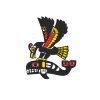
Media Release: March 21, 2017
WORLD WATER DAY
“World Water Day, on 22 March every year, is about taking action to tackle the water crisis. Today, there are over 663 million people living without a safe water supply close to home…” (UN Water, https://www.worldwaterday.org/)
(Duncan, BC) As communities across the globe recognize UN World Water Day, and the Cowichan Valley watches the last remnants of snow trickle into rivers and out to sea, the Cowichan Watershed Board would like to applaud our most water wise residents for leading the way to a sustainable future.
The Cowichan Water Conservation Challenge is a four-year initiative to track and reduce residential water use. Launched in July 2014 as a collaboration of local governments responding to an extreme drought, the challenge engages the region’s residents and water suppliers in a collective race to reduce daily home water use. The goal is to reduce daily home water use by at least 20% on average.
"Respecting our watershed means not depleting its resources,” says Cowichan Tribes Chief William Seymour. “When river flows and aquifers are dropping we need to reconsider our priorities."
As of December 2016, Cowichan Bay Waterworks District, serving over 2,000 customers, is in front of the pack at 31% residential water use reduction since our baseline 2013 year. Congratulations Cowichan Bay!
Cowichan Bay residents also used the least amount of water on a per capita basis in 2016, at 211 litres per person per day. This might be in part because higher housing density means fewer lawns to water, so kudos to compact living, and thank you Cowichan Bay residents.
“We believe the success comes from a variety of sources including strict sprinkling regulations, water toll rates designed to charge higher rates for high volume users, and public education surrounding water conservation and leak detection,” explains Cowichan Bay Waterworks District Administrator, Donna Monteith. “Our residents understand the need to protect our most valued resource and have embraced the challenge to reduce water consumption.”
"We must continue to develop a culture of conservation when it comes to water, to do our best to protect this precious resource moving forward,” says Cowichan Valley Regional District Chair Jon Lefebure.
The 2016 Water Challenge results are provided in the attached backgrounder.
Media Contact
David Slade, Drillwell Enterprises, Cowichan Watershed Board Member, Founder of the Cowichan Water Conservation Challenge / [email protected] / 250-743-4747
The Cowichan Water Conservation Challenge
About the Challenge
The Water Challenge was inspired in part by Ladysmith’s great success in water conservation between 2002 and 2013. The town reduced total water use from 1,700,000 m3 to 1,279,000m3, or approximately 25%, while the population grew by 20%, proving that big water savings are achievable.
Cowichan Watershed Board member David Slade, a local well-driller and groundwater expert, then approached all the other local governments and major water suppliers about the value of water. Slade challenged them to ‘meet or beat Ladysmith’ within four years, and all seven of the largest local residential water providers agreed.
The partners in the challenge are Town of Ladysmith, Municipality of North Cowichan, Cowichan Valley Regional District, Town of Lake Cowichan, City of Duncan, Cowichan Bay Waterworks District and Mill Bay Waterworks District.
2016 Water Use Results
Despite four years of drought, which normally triggers higher water use, we are all using less water now than three years ago.
The 2016 results, as reported by the water suppliers listed below, in litres per person per day (LPD), are as follows. Congratulations to all these water providers for their efforts! Let’s all pitch in to keep trending towards water sustainability in the Cowichan Region.
|
2013 Baseline |
2016 Water Use (LPD) |
|
|
Municipality of North Cowichan (all systems) |
||
|
Residential Consumption Average Daily Flow ( L/p/d) |
296 |
245 |
|
Residential Consumption Average Daily Flow ( L/p/d) compared to 2013 values. |
-17.05% |
|
|
Mill Bay Waterworks District |
||
|
Residential Consumption Average Daily Flow ( L/p/d) |
249 |
243 |
|
Residential Consumption Average Daily Flow ( L/p/d) compared to 2013 values. |
-2.60% |
|
|
Cowichan Bay Waterworks District |
||
|
Residential Consumption Average Daily Flow ( L/p/d) |
307 |
211 |
|
Residential Consumption Average Daily Flow ( L/p/d) compared to 2013 values. |
-31.18% |
|
|
Cowichan Valley Regional District (all systems) |
||
|
Residential Consumption Average Daily Flow ( L/p/d) |
399 |
342 |
|
Residential Consumption Average Daily Flow ( L/p/d) compared to 2013 values. |
-14.40% |
|
|
Town of Ladysmith |
||
|
Residential Consumption Average Daily Flow ( L/p/d) |
276 |
268 |
|
Residential Consumption Average Daily Flow ( L/p/d) compared to 2013 values. |
-2.84% |
(Note that there are variances from 2015 results due to new reporting metrics introduced this year. 2016 statistics were not available from City of Duncan or Town of Lake Cowichan. )
Lessons Learned So Far
One of the advantages of the challenge has been the opportunity to learn from the water operators from different water districts who work most closely with our water resources. Some of their observations and suggestions to reduce water demand are:
- Landscaping: When new lawns and landscaping are planted in spring or summer, water demands are higher. Timing plantings to take advantage of fall rains is preferable. This is particularly effective with large landscaping projects such as new housing developments. Planting with native drought-tolerant plants is also recommended.
- Irrigation systems: Where people embrace micro-drip or rainwater irrigation systems with well-tuned timers, water demands are greatly reduced.
- Water metering: Global statistics show that when people pay more for using more water, they use less. For example, in Ladysmith, water operators estimate that the Town used an astounding 45% less water per capita in 2013 compared to 2002.
- Watering Restrictions: In 2015, owing to Stage 3 watering restrictions, significant water savings were seen across the region despite the severe drought. In particular neighbourhoods, including Chemainus (North Cowichan) and the Satellite Water System (CVRD), and Mill Bay, annual residential water use dropped by over 50% in one year. So while watering restrictions may be inconvenient, they do work to conserve water. Note that in 2016, we didn’t go to Stage 3 and still saw modest declines in use in three of the five systems which is a great trend! Ideally, water conservation should be a year-round habit with tools and technologies in place to maximize efficiencies.
Why Save Water?
- Because we use more than our share. According to the last Canadian statistics on municipal water systems (2011), average residential water consumption was 251 litres/person/day (LPD) which is among the highest rates in the world. The 2016 Cowichan Region average according to reports received is 262 LPD – even higher than that Canadian average! By comparison, Germans use less than half as much water per person, at approximately 122 LPD. (2012 statistic)
- Because Vancouver Island droughts are becoming the norm. While many of us get our water from invisible underground sources, the low water levels we see above ground are a reflection of lower summer water flows throughout the region. Studies show that not all water sources are depleting, but some are, and it is unknown which will deplete next, or how quickly. Mill Bay Waterworks District Administrator, Donna Michiel, points out that although we have had more snow and rainfall this winter, it won’t necessarily reverse the effects of recent consecutive years of drought, and replenish the aquifers in the short term as some may believe.
- Because we can! Here are some changes we can to make, at multiple scales.
- Embrace higher housing density. Tighter neighbourhoods with less lawn and landscaping reduce summer watering.
- Use recycled water. Some of our parks use recycled water. For example, the toilets at Transfer Beach recycle water from the Spray Park.
- Capture rainwater. Rain barrels are good but may be too small to make much of a difference in summers without intermittent rains, as is happening more. Invest in a larger rain water harvesting system if you can, of 1000L or more, to really catch enough rain to make a difference. Plants prefer rainwater too, so you get healthier gardens. Lobby your local municipalities to require cisterns in new home construction.
- Enjoy the summer tan. Let your lawn soak up the sun and turn brown for the season.
- Plant only drought tolerant species. Our climate has changed – so must our gardens.
- Save up for a micro-drip system (one using less than 20 gallons per hour which operates at less than 25 psi to deliver water to the root zone of the plant material). They are so efficient that they are allowed to operate at any time of day for a maximum of 4 hours per day during water restriction stages 1, 2 and 3.
- Keep a dishpan in the sink to catch your rinse water and carry it out to replenish your rain barrel or water plants, or have a plumber install a greywater outlet directly from your kitchen sink to a watering tank.
- It’s hip to fix a drip! Leaking toilets and hose connections waste water every second. In some cases fixing one leak can reduce a home’s water use by 20% in one simple step.
Local well-driller and Chair of the Cowichan Watershed Board’s Water Conservation Working Group, David Slade, says, “In Africa this winter volunteering on a water well drilling project, I was privileged to get to know some people who truly understand the value of water. Women would walk for miles carrying 20 litres or more of water on their heads. That precious 20 litres would be used to meet the needs of an entire family for a day! While I don’t believe we can or should reduce our daily consumption to 5 litres per person, we could learn a lot from those Africans about how to value our planet’s most vital natural resource.”
More information
Cowichan Water Conservation Challenge website: https://www.cowichanwaterchallenge.ca/
Photos on Facebook: https://www.facebook.com/pg/CowichanWaterChallenge/photos
Click here to download this media release
 Email
Email



